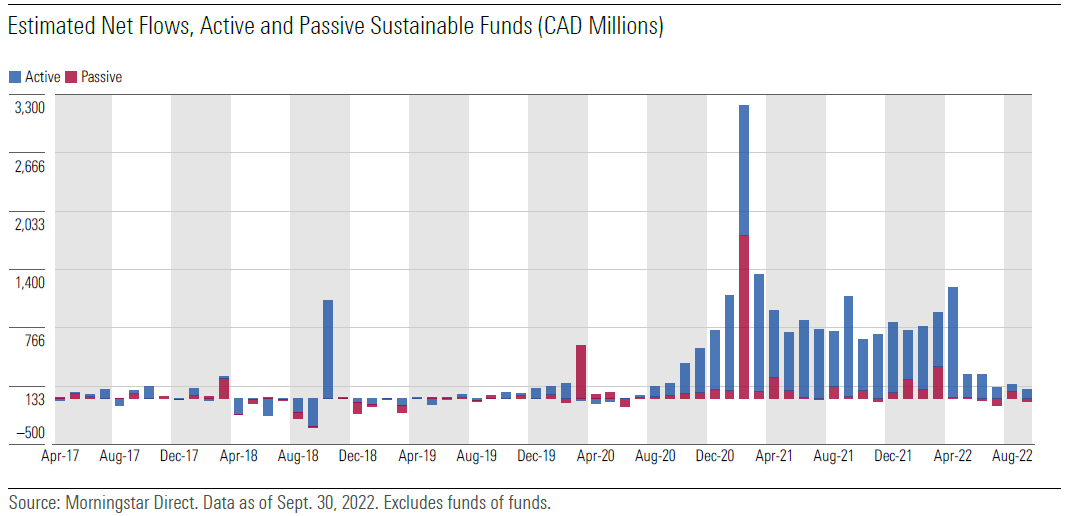
Morningstar’s Q3 Sustainable Investing Landscape for Canadian Fund Investors finds that asset managers appetite for new fund launches in the ESG (environmental, social and governance) space might be dimming. Fewer sustainable mutual funds launched in the third quarter of 2022, and no new exchange traded funds (ETFs) launched for the second quarter in a row, the report finds.
“In the past, we experienced a diverse set of launches from various sustainable product providers (both mutual funds and exchange-traded funds), but this quarter was different,” says report author and Morningstar manager research analyst Abdulai Mohamed.
His research finds that only five new Canada-domiciled sustainable investment products were launched in the third quarter, all of which were mutual funds, representing a 60% and 80% drop from the second and first quarters, respectively. Only Canada Life, Mackenzie Investments, and Manulife launched new sustainable mutual funds.
As Fewer ESG Products Launch, Asset Growth Declines
Mohamed notes that growth in sustainable funds and ETFs stalled – assets grew by 0.3% from a quarter ago, with actively managed funds contributing (up 1%) while passive strategies dragged (down 2%). Active strategies represent 86% and passive strategies represent 14% of the sustainable product landscape.
“Asset flows into sustainable funds and ETFs declined but were still positive at roughly $243 million. This was an 85% drop compared with $1.68 billion in flows in the previous quarter. This size of inflow was last seen in the third quarter of 2020 at roughly $322 million. Active strategies contributed to the inflows ($278.2 million), while passive strategies' flows were negative (negative $34.4 million),” Mohamed says.

He notes that sustainable fixed-income offerings experienced stronger inflows than their equity counterparts for the first time. “Flows into equities had always been in favour since the start of this quarterly report in 2020, largely because of the number of actively managed products available to investors. Across asset classes, 81% of inflows went to fixed-income funds, 1% went to equities, and 8% to each allocation and alternative funds. Last quarter, more than 70% of inflows went to equities and less than 20% to fixed income.”
What About ESG Fund Performance?
Mohamed finds that the performance of sustainable investment funds and ETFs was favourable over the third quarter, with equities and allocation leading the way, while fixed income was mixed.
“64% of sustainable equity funds and 63% of sustainable allocation funds outperformed their respective Morningstar Categories, while 66% of fixed-income funds underperformed their peer categories. Canadian sustainable products are concentrated around large-cap-biased categories such as global equity, U.S. equity, and Canadian equity, which limits the product availability for investors interested in energy and small-cap exposures,” he says.




















